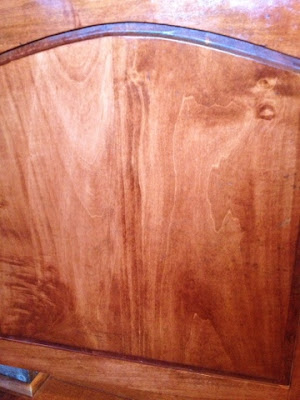So I've been out and about lately looking to replace my sofa and loveseat in my living room. I've had them over 12 years and they've served me well.
Now as everyone knows, I'm a bargain hunter. I hit all my local haunts looking for a good deal on something I actually liked, but I was striking out. Either I didn't like the fabric, the size, the style or the price. I also ran the risk of getting something that I might end up hating, didn't look good in my room, didn't fit or doesn't wear well. I keep furniture a LONG time, so that initial purchase always scares me. I lucked out last time and got a steal of a deal on a style I loved then and still adore, and the frame and fabric has held up. It was just the back cushions that were lacking.
After a few days of hitting stores close by while I was running other errands, I realized I wasn't going to find a good deal on what I wanted right now.
So, back home to my sagging cushions. Later that night I sat on my loveseat, and began watching HGTV. On one of the shows they said "most couch cushions have zippers so you can remove the covers to wash them". I thought, yeah if your cushions come off...my back cushions are attached. I placed my hand under the back cushion and voila there is a zipper! Oh my goodness, I can add stuffing to my back cushions even though they are permanently attached! I had no idea!
So the next day began the transformation of my sofa!
I am a self proclaimed hoarder of materials and supplies. Before I throw anything away I will rip it apart for parts for future possible uses. Ever since I have lived on my own I have removed the stuffing from old pillows I am replacing and kept it. I've used it to make European pillows, pillows for pillow shams, decorative pillows for my girls rooms, etc. Because of that I had tons of stuffing to use to help fill my cushions.
It was quite easy actually. First, remove any cushions you can and vacuum :). Mine was in desperate need of that :)
Second, unzip the cushion you want to revive and remove the form inside (mine was a covered pillow filled with poly fill and not completely re-sewn shut...you'll have to split your pillow cover open a little it yours isn't).
Third, remove any extra stuffing that might be up in the cushion (yours may not have this, but mine did...I guess it was added after the cushion form was put in to fill any loose spots).
Fourth, re-fluff the current poly fill (if you don't have a solid foam form, you can refluff the compressed poly fill by pulling it apart handful by handful).
Fifth, add additional poly fill to fill the cushion until it is plump.
Sixth, reinsert the form into you cushion cover and attempt to rezip it :) This is a fun task on your own...i managed, but get a helper if you can :) Here is the left pillow refilled and the right pillow not.
Last but not least, enjoy your new sofa that looks and feels brand new!!!! I am so happy I don't have to go furniture shopping anymore, and now I can add stuffing as it starts to look even slightly compressed (vs. waiting until it is dead like before :)
Here is the side by side before and after. So happy!
Have fun restuffing your sofa! It's the best arm workout you can ask for :)


















